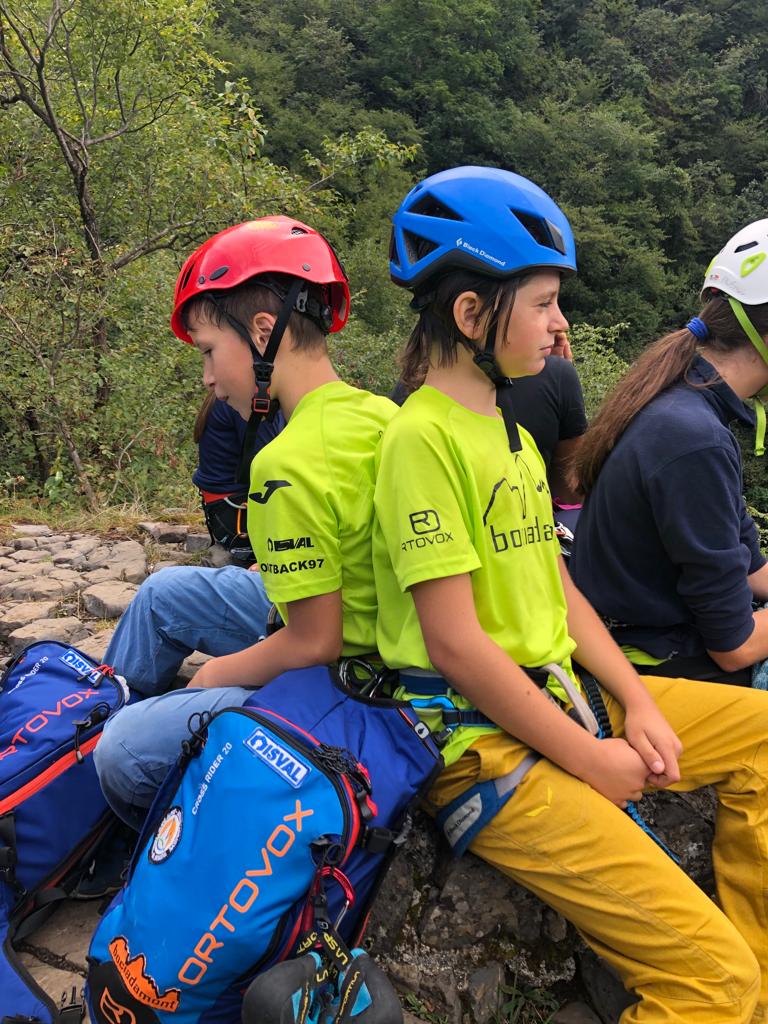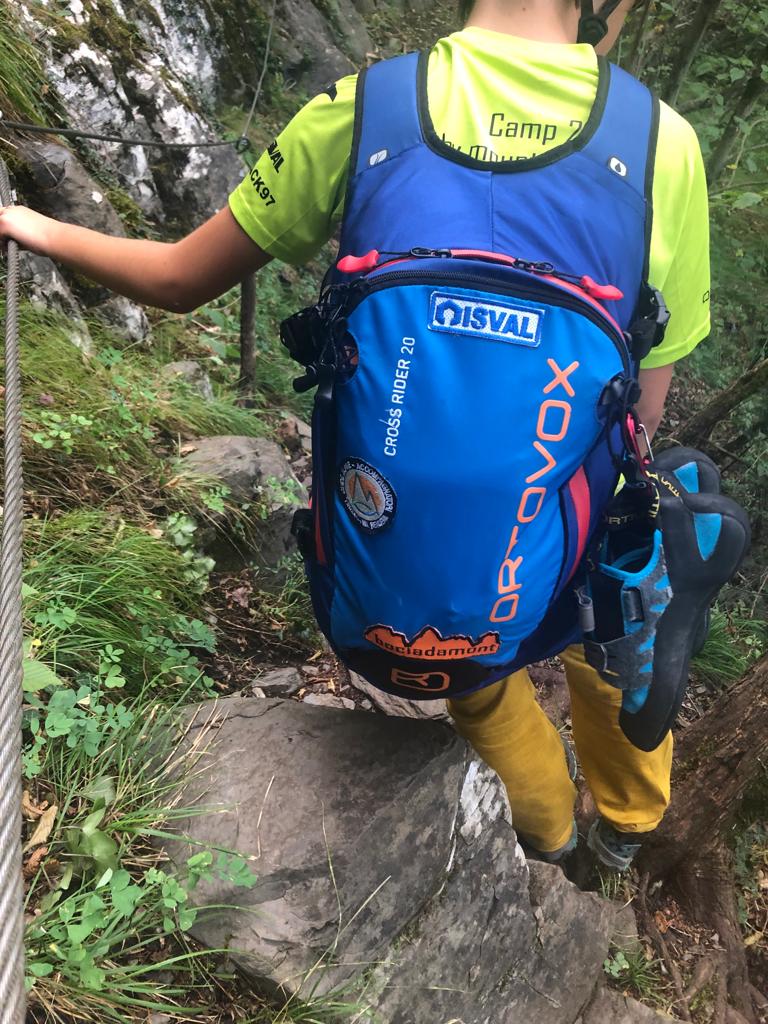by Martina Fea
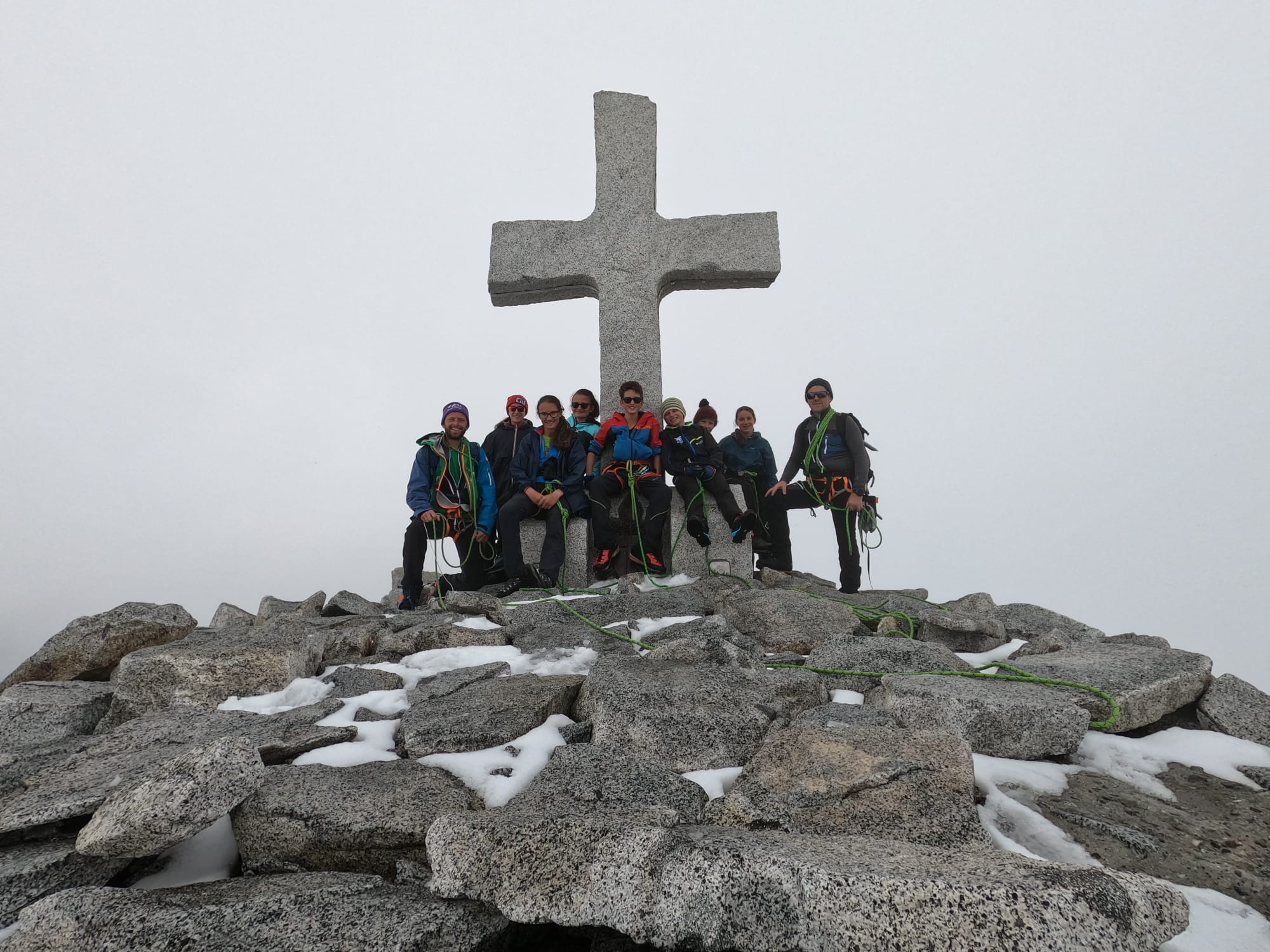
Bocia da Mont, the mountain school
When you approach the mountains as a child, it is essential to have a guide who, in addition to passion and motivation, will pass on values such as safety and respect for fellow mountaineers.
We met up with Nicola Castagna, a 26-year-old mountaineer who, together with other colleagues, this summer decided to devote himself to the “Bocia Da Mont” project to introduce boys and girls aged 12 to 16 to the mountain environment, with the aim of starting a new generation of mountaineering enthusiasts.
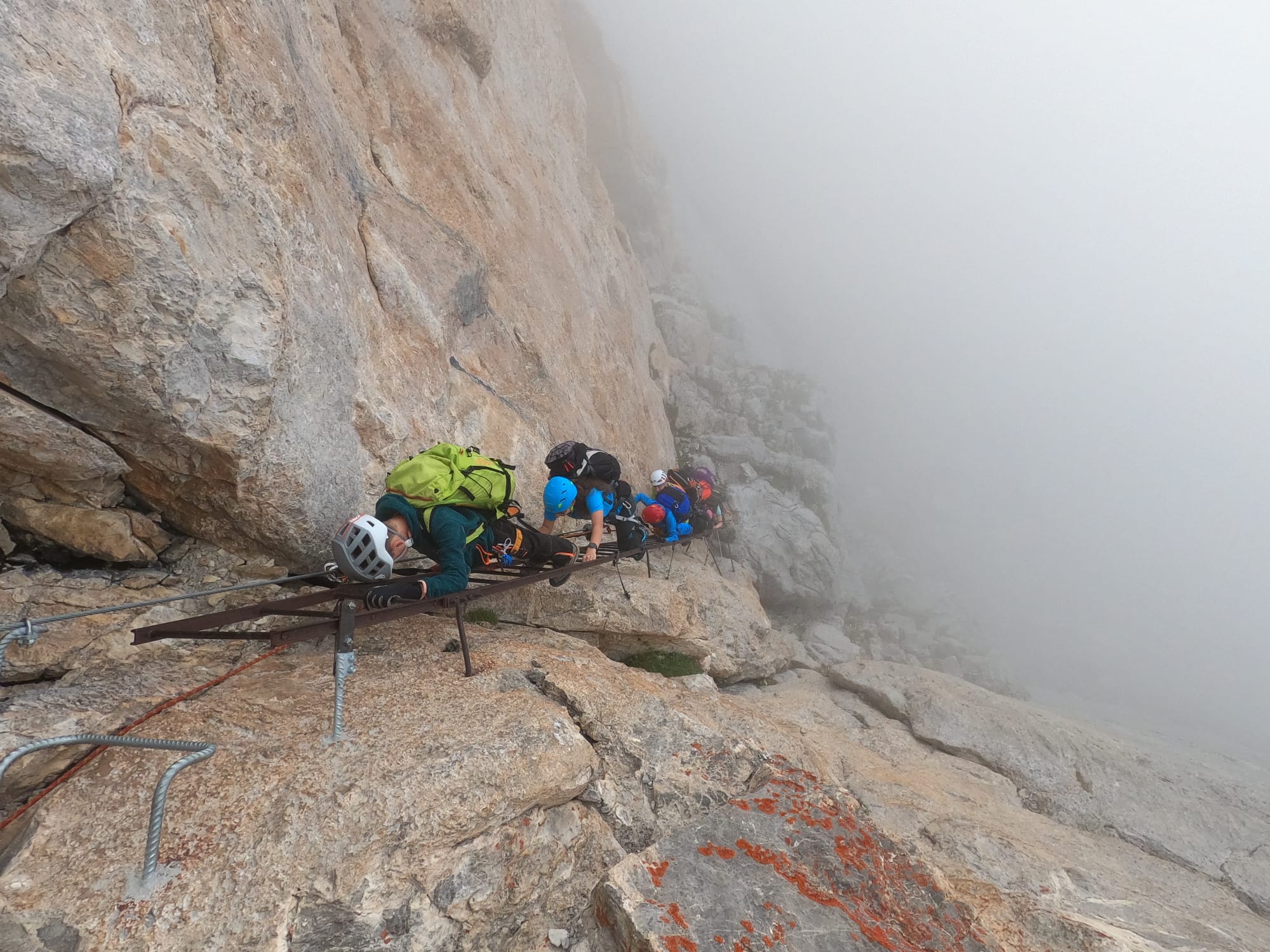
Hi Nicola, tell us a bit about your work. On the 4th of May you started a remarkable feat: climbing 82 peaks over 4000 metres in the Alps in 80 days. Can you tell us what it was like?
It was an all-encompassing experience: for almost three months, my body and mind were focused on a single project. This allowed me to explore my mental and physical limits and deepen my knowledge of myself. It was also an interesting adventure from a human point of view, because the sharing of hardships, fears, satisfaction and pain with my partner Gabriel Perenzoni forged a solid bond of esteem and friendship that will last. Lastly, this trip allowed me to explore the Alps and see breathtaking places which, after all, are only a few hours’ drive from home and where there is still plenty of room for real mountaineering adventures!
How did the idea of creating “Bocia da Mont” come about? What do you hope to create with such a project?
The idea came from some of my colleagues, mountain guides from Pinzolo Mountain Friends, who wanted to give young people the chance to get closer to the world of the mountains, a bit like they had done years ago with other guides. We wanted to try and make them understand the beauty and satisfaction that climbing, trekking and via ferrata can give, and ultimately pass on a little of our passion.
What was it like to introduce such a young group of people to the world of mountaineering? What were their impressions? How do you think they found it?
Certainly teaching young people is a big responsibility. There are a few safety rules that have to get into everyone’s heads and the guides have to constantly check that they have been understood correctly. For the rest, the enthusiasm and energy of the youngsters is contagious and makes for a full and intense day. Judging by the participation they showed, I think the youngsters got on well, both with the guides and above all with each other, and this is very important because the ability to share an experience with companions is fundamental for mountaineering and not only that.
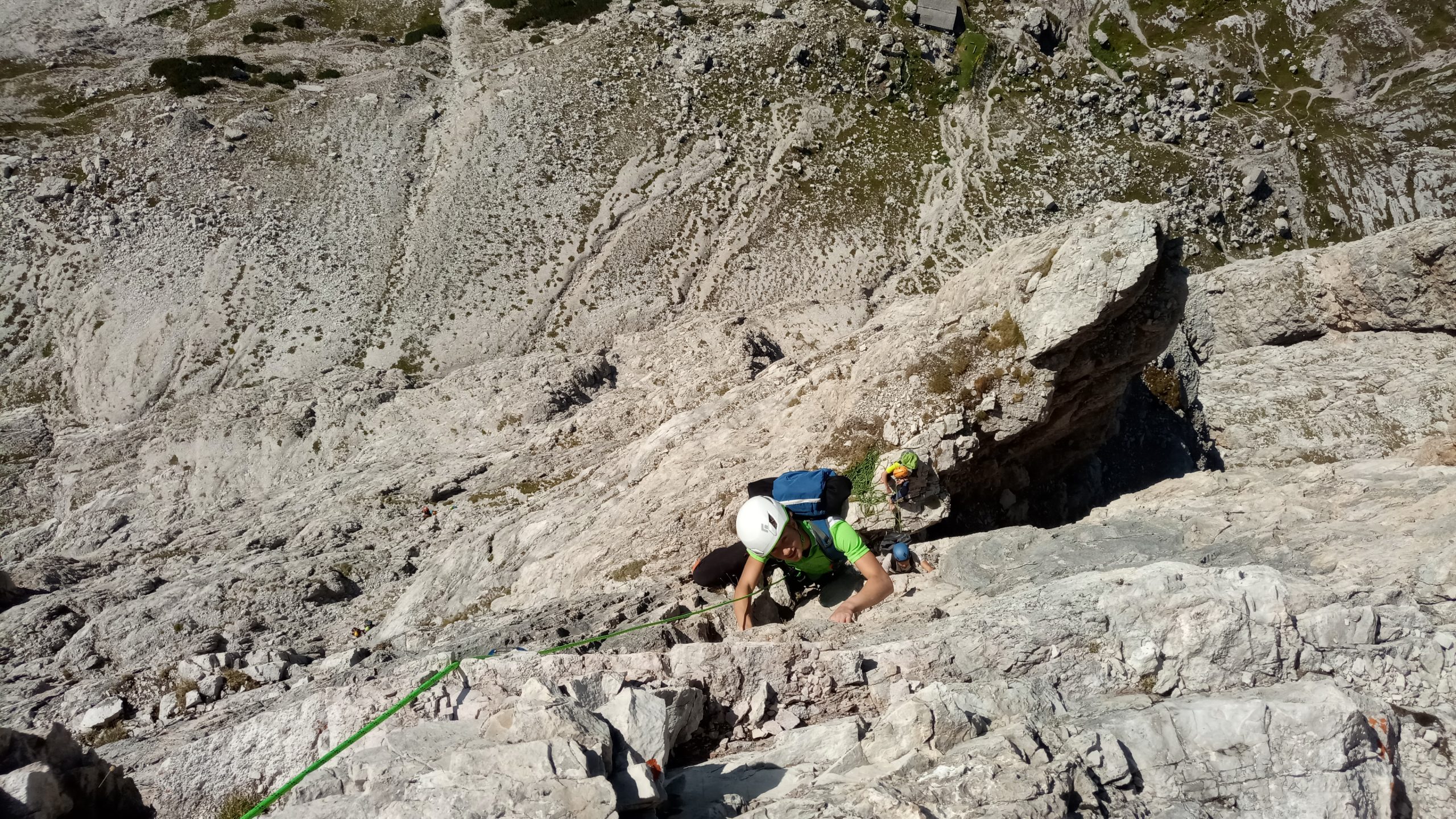
What do you think is the best way to introduce a young boy or girl to the mountains without frightening him or her? Is there a greater need for programmes like this?
Without a doubt, the approach must be gradual and must follow the children’s learning curve in order to offer activities that require the right level of commitment. Once you have learned the basics in an environment that should be as ‘comfortable’ as possible, you try to raise the bar of difficulty, being careful not to overdo it so as not to create fear and rejection, but at the same time I think it is essential to have a bit of stimulus to make it fun and show how much and how you can improve. The right mix of commitment and pleasure is certainly not easy to achieve. In my opinion, the more opportunities there are for young people to get closer to the mountains, the better, not only in terms of physical activity, but above all in terms of the values that the mountains teach: a sense of responsibility, altruism, humility, courage, patience… Values that can then be spent in everyday life!
In mid-September, Federico Tomasi, a boy of just 11 years old, climbed the Matterhorn, becoming the youngest person ever to reach the summit. In order to achieve this great goal, Federico had to skip a few days of school, a choice his classmates’ parents disapproved of. What do you think?
This is a difficult question, I don’t have a son of that age, but what I can say is that it all depends on the motivation behind Federico’s goal. If there was a genuine desire to climb the Matterhorn, and above all a personal one, I see nothing wrong in skipping a few days of school. Study is fundamental in a young person’s development, that’s for sure, but it’s not the only important thing in their training. Personally, I devote a good chunk of my life to studying, I’m finishing a degree in engineering, but I have developed my character, my ambitions and the values I try to live by every day by going to the mountains, experiencing the sincere and clear emotions that they can offer.
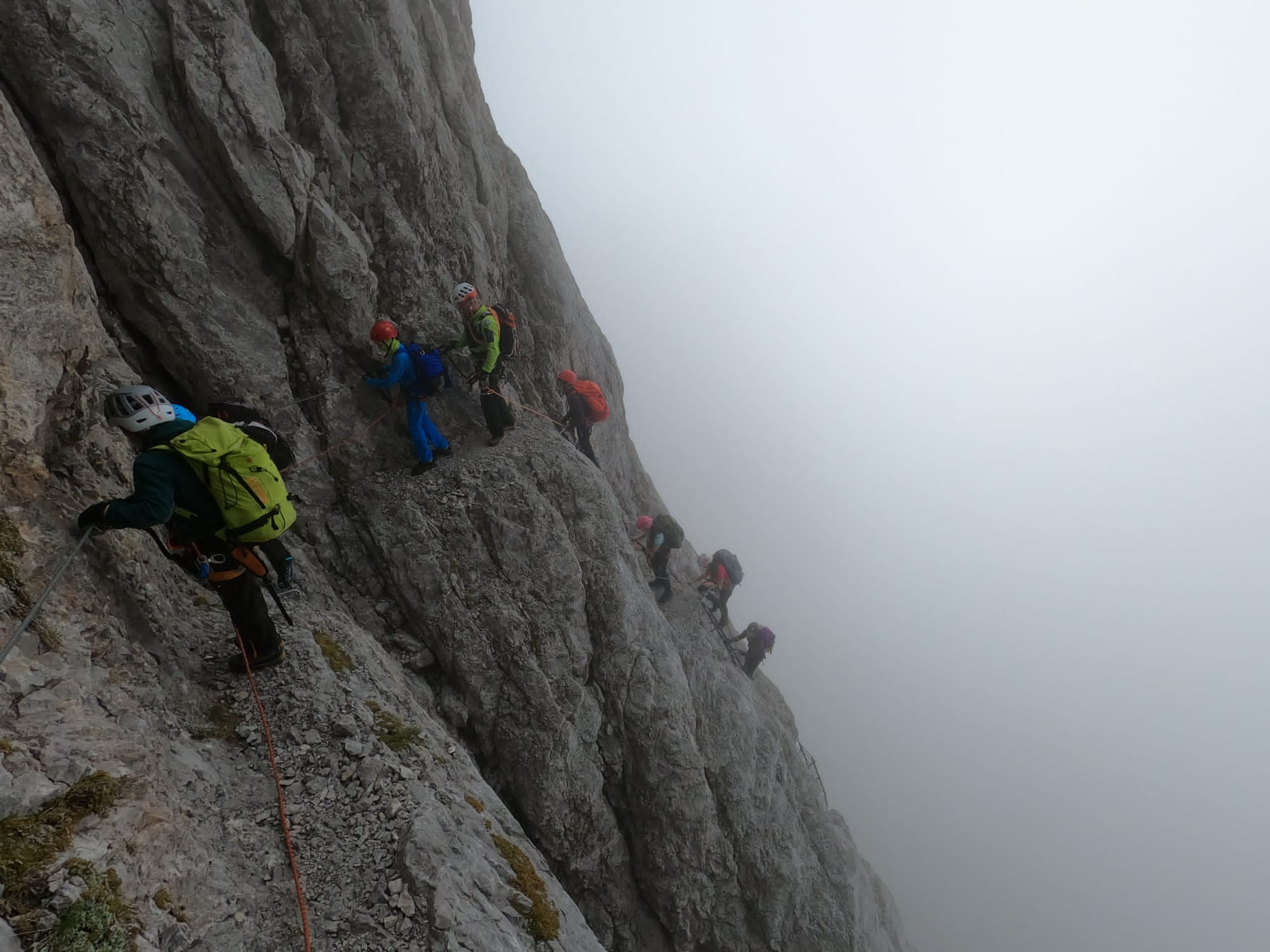
How did the programme develop and how did you choose the destinations and activities to propose to the youngsters? Tell us about a typical day.
The general programme was drawn up by one of our mountain guide colleagues from Pinzolo and sought to understand the main activities that the mountains of the Adamello-Brenta group have to offer. We certainly wanted to take them to the glacier, which can also be seen from the bottom of the valley, to do the Bocchette route to explore the Brenta peaks and climb the Tosa peak. Classic trips, perfect for becoming aware of the infinite possibilities that these mountains have to offer. It is difficult to define a typical day, as the organisation changed a lot depending on the activity. However, when the Bocia were in the hut, the wake-up call was early in the morning in order to make the most of the day. Usually by the early afternoon the bulk of the trip was done, but after the lunch break we always tried to offer additional activities!
How important is it to teach such young people about safety in the mountains and how did you go about it?
The subject of safety in the mountains is at the heart of our profession as mountain guides and passing on part of our knowledge was obviously one of the aims of the project. It is desirable that everyone who goes into the mountains should be aware of the risks associated with this environment, whatever their age. And to create this culture of safety in the mountains, you have to start from the basics: what kind of clothing to wear, what kind of footwear to wear, what to bring or not to bring in your rucksack, what to check the weather forecast… They had to make a list of what to put in their rucksacks a few days before departure, and then the guides would check it. When climbing at the crag, they were responsible for tying knots and securing their partner (always after checking with us) and when tying in a rope, it had to be clear to them how and why it was being done.
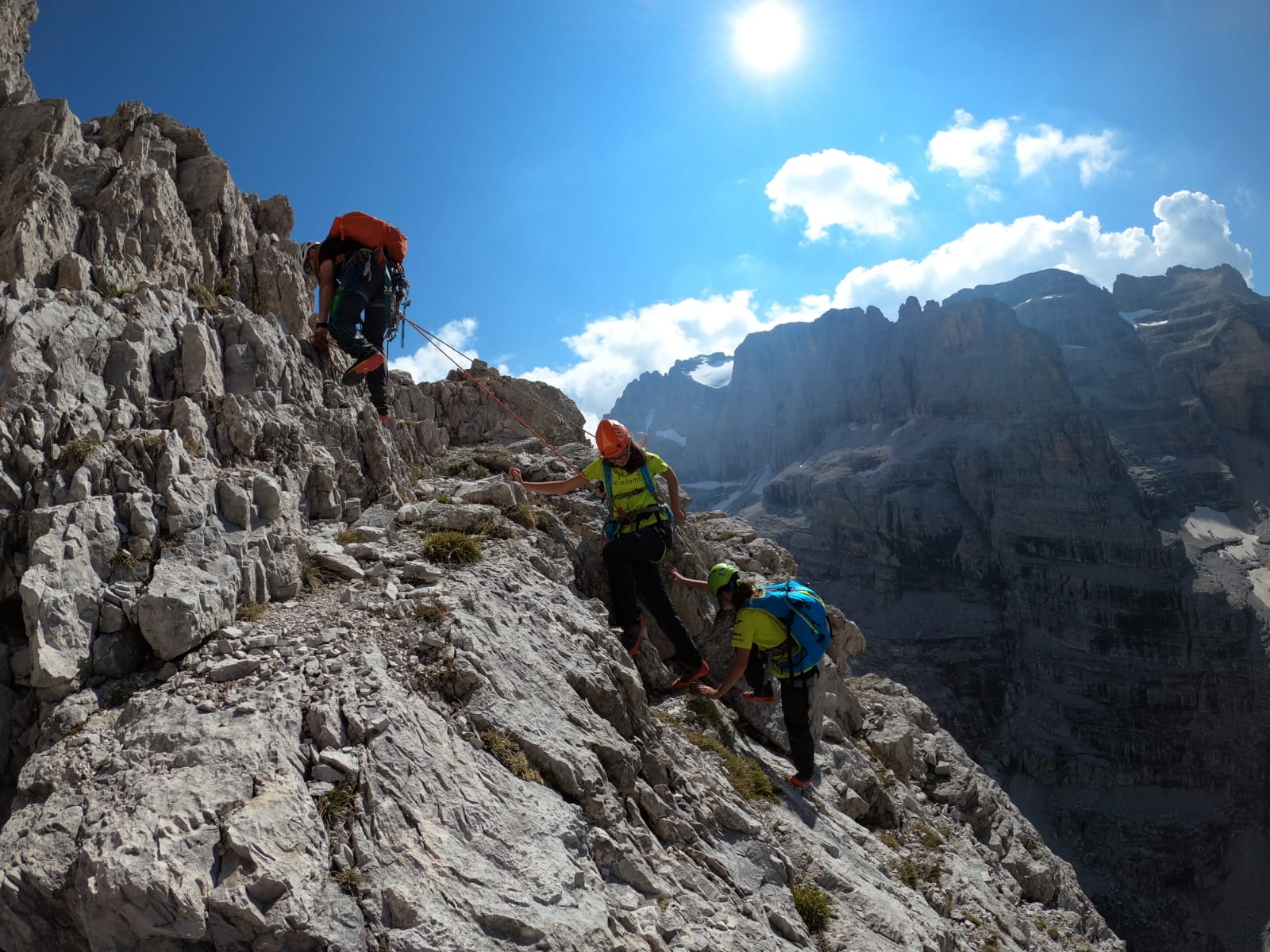
Which brands have supported you and how?
A large contribution came from the Isvald group, which made it possible to cover a large part of the costs of the project. In addition, Ortovox, through its Italian importers Outback97-Ortovox Italia, provided all the Bocia with a backpack and T-shirt. We thank them very much for their support and hope to continue the collaboration in the seasons to come!
Do you intend to make “Bocia da Mont” a fixed initiative over the years? What plans do you have for the future?
Well, we haven’t thought about that exactly yet, but why not? What we want to do now is to organise some winter activities so that their approach to the mountains also includes snow and ice, fascinating but sometimes treacherous worlds. Next summer, we would like to propose a continuation of the programme with some more challenging trips. In any case, it is the enthusiasm of the children that will navigate us: as long as they like it, we will be happy to guide them through the world of the mountains!
